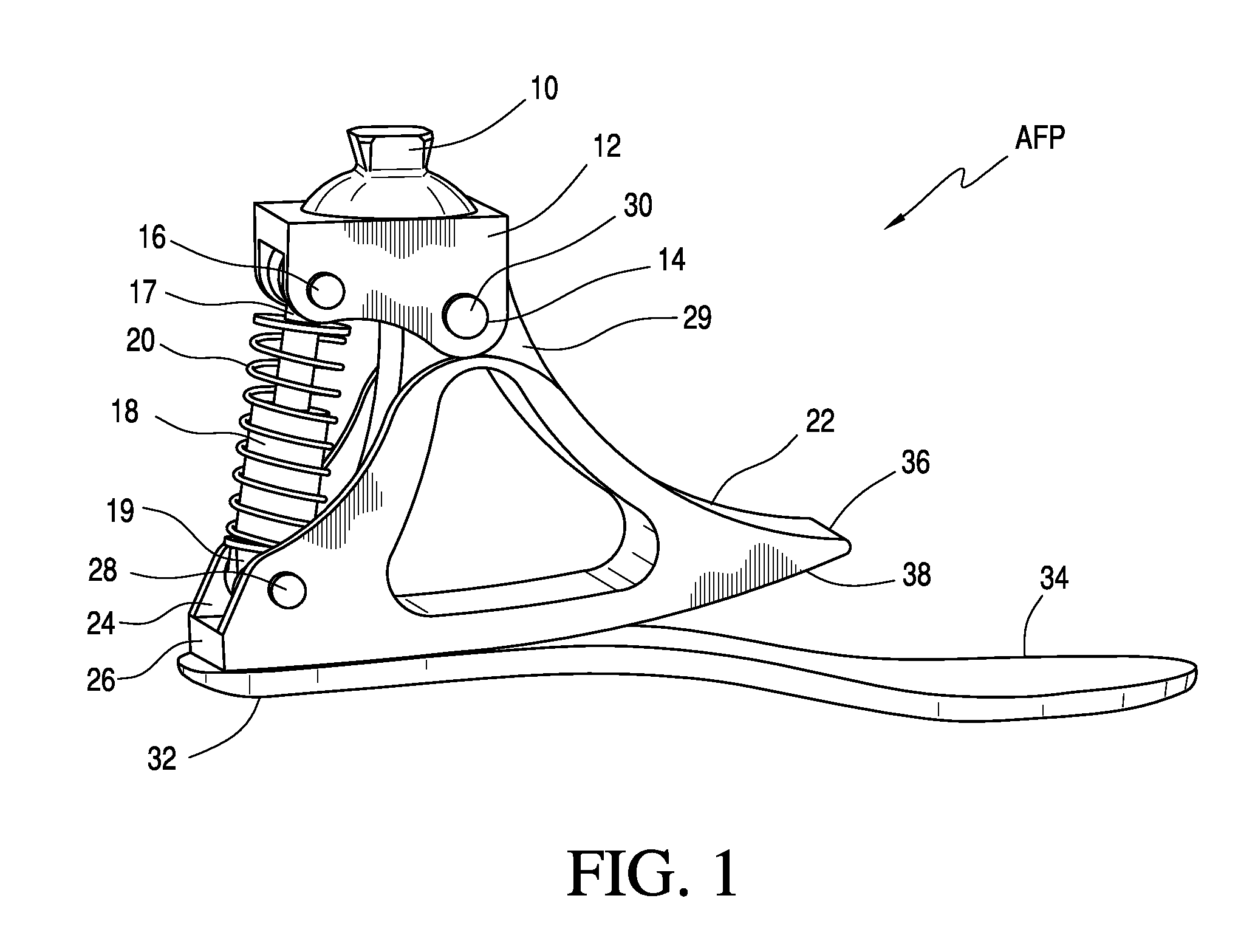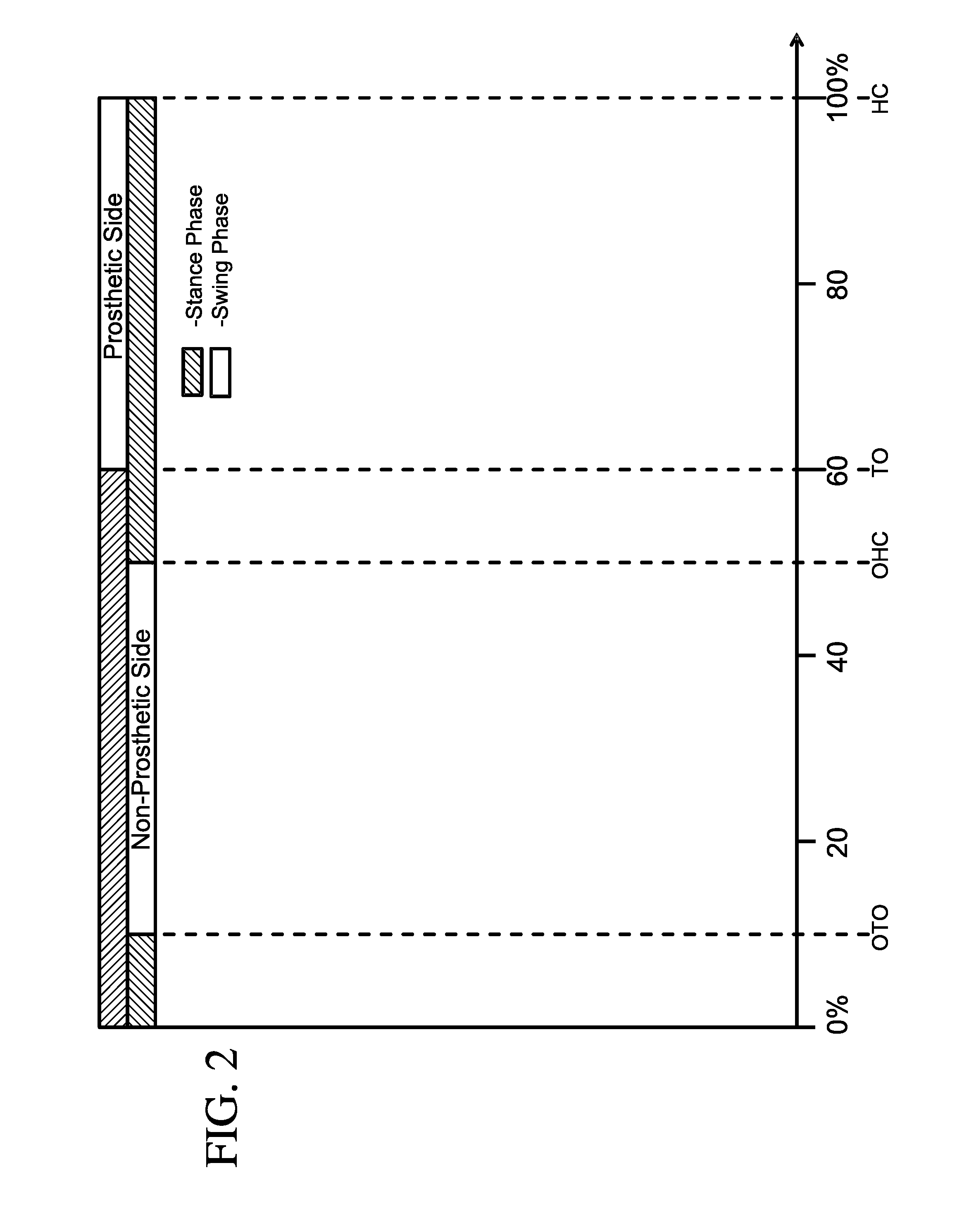Ankle-Foot Prosthesis for Automatic Adaptation to Sloped Walking Surfaces
a technology of automatic adaptation and ankle foot, which is applied in the field of prosthetics and orthotics, can solve the problems of high cost of current available system, inability to meet the needs of the majority of users of lower limb prosthesis, and associated loss of energy
- Summary
- Abstract
- Description
- Claims
- Application Information
AI Technical Summary
Benefits of technology
Problems solved by technology
Method used
Image
Examples
Embodiment Construction
[0026]Referring to FIG. 1, a preferred embodiment of the ankle-foot prosthesis AFP will be described. As shown, a generally pyramid-like attachment part 10, consistent with standard endoskeletal componentry in prosthetics, is provided at the top of a yoke 12, on the opposite ends of which are holes drilled for front and rear pivotal attachments 14 and 16, respectively. The rear pivot 16 attaches to one end 17 of a preferably microprocessor controlled damper device 18 (to be described in more detail below). A neutralizing spring 20 is connected in parallel to the damper 18, such that its length change is equal to that of the damper.
[0027]The damper device 18 attaches on its other end 19 to an ankle frame 22, which has a yoke opening 24 and holes drilled at its posterior end 26 to pivotally attach to the damper 18 using a shaft 28. The “ankle” of the device AFP is a shaft 30 connecting the yoke 12 with the apex 29 of the ankle frame 22.
[0028]The ankle frame 22 attaches with one or mor...
PUM
 Login to View More
Login to View More Abstract
Description
Claims
Application Information
 Login to View More
Login to View More - R&D
- Intellectual Property
- Life Sciences
- Materials
- Tech Scout
- Unparalleled Data Quality
- Higher Quality Content
- 60% Fewer Hallucinations
Browse by: Latest US Patents, China's latest patents, Technical Efficacy Thesaurus, Application Domain, Technology Topic, Popular Technical Reports.
© 2025 PatSnap. All rights reserved.Legal|Privacy policy|Modern Slavery Act Transparency Statement|Sitemap|About US| Contact US: help@patsnap.com



